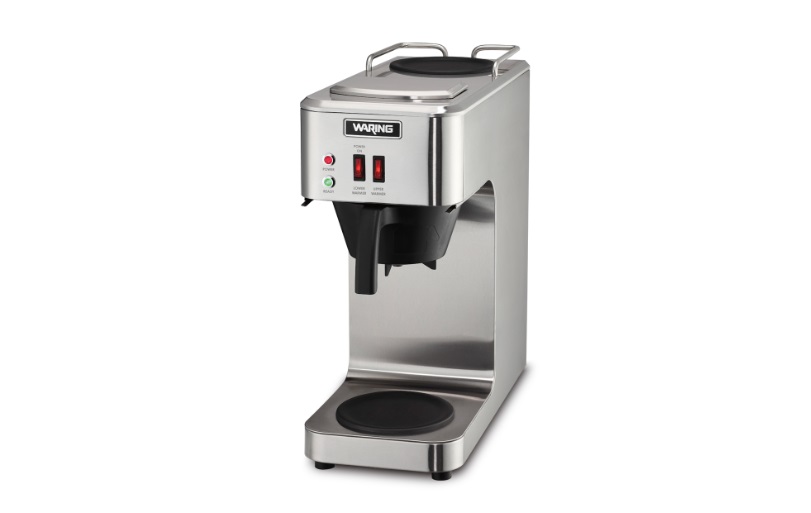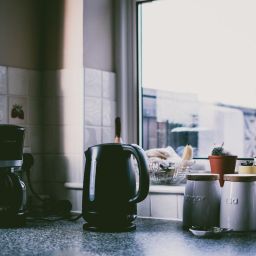
Pour over coffee makers bring an artisanal touch to coffee brewing, emphasizing precision and quality. In commercial settings, these machines are a game changer. Unlike traditional coffee makers, pour over devices allow for a hands-on brewing process, where water temperature and pour speed are controlled to extract the full flavor of the coffee grounds.
This method not only produces a superior cup of coffee but also showcases a commitment to quality that customers appreciate. For businesses, investing in a commercial pour over coffee maker means elevating the coffee experience to a new level, offering a product that stands out in a crowded market.
Key Takeaways
- Efficiency: Speed and consistency are crucial in a commercial environment. These machines streamline the brewing process without sacrificing quality.
- Versatility: Adapt to any coffee type or roast, catering to a wide range of customer preferences.
- Quality: Achieve a superior brew that emphasizes the nuanced flavors of the coffee, making each cup a premium experience.
Benefits of Using Commercial Pour Over Coffee Makers
The allure of pour over coffee comes from its meticulous process, which is surprisingly well-suited to the hustle of commercial settings. Here’s why:
- Precision Brewing: These machines offer control over every aspect of brewing – from water temperature to flow rate. This precision ensures that the coffee’s complex flavors are fully extracted, creating a richer and more robust cup.
- Quality of Brew: There’s a noticeable difference in the cup. Pour over brewing highlights the unique characteristics of coffee beans, such as acidity, sweetness, and body. It’s not just coffee; it’s a taste experience.
- Customizable: Commercial pour over coffee makers often come with settings that can be adjusted according to the coffee being used or the desired strength of the brew. This flexibility means that businesses can cater to the individual preferences of their customers, offering a personalized coffee experience.
- Efficiency Meets Artistry: Despite their focus on quality, these machines are designed to meet the demands of busy commercial environments. Many models combine the artistry of manual pour over with the efficiency of automated brewing, ensuring that even during rush hours, the quality of the coffee remains uncompromised.
Popular Models and Brands of Commercial Pour Over Coffee Makers
When it comes to commercial pour over coffee makers, certain models and brands stand out for their reliability, quality, and user-friendly features. Here’s a closer look at some of the leading contenders: the Bunn VPR series, Poursteady machines, and the Keurig K-2500.
Bunn VPR Series
The Bunn VPR series is a staple in the commercial coffee brewing space, known for its durability and ease of use. These machines can brew up to 3.8 gallons of coffee per hour, making them suitable for high-demand environments. They’re designed to be portable and require no plumbing, offering flexibility in setup. However, one potential drawback is their always-on heating element, which can increase energy consumption.
Pros:
- High brewing capacity.
- Durable and easy to use.
- No plumbing required, enhancing portability.
Cons:
- Always-on heating element increases energy use.
- Bulky design may take up significant counter space.
Poursteady Machines
Poursteady brings innovation with its automatic pour over coffee machines, combining precision engineering with quality manufacturing. These machines stand out for their robotic precision, allowing for consistent quality in every cup. Poursteady machines are customizable through an app, giving the user control over temperature and brew recipes. Their main limitation might be the higher upfront cost and the need for regular maintenance to keep the robotic components functioning optimally.
Pros:
- Robotic precision for consistent quality.
- Customizable brew recipes and temperatures.
- Designed for high-volume coffee service.
Cons:
- Higher initial investment compared to other models.
- Requires regular maintenance.
Keurig K-2500
The Keurig K-2500 offers a convenient, pod-based pour-over system, making it ideal for businesses that value speed and variety. It features a pour-over water reservoir and can be easily adapted with a direct water line plumbing kit for even easier operation. While it provides variety and convenience, the reliance on pods may not suit establishments aiming for a more artisanal coffee experience. Additionally, the environmental impact of single-use pods is a consideration.
Pros:
- Quick and convenient with a wide variety of pods.
- Option for direct water line connection.
- Easy to use with minimal setup.
Cons:
- Reliance on single-use pods may not be environmentally friendly.
- May not meet the quality expectations of artisanal coffee enthusiasts.
How to Choose the Right Commercial Pour Over Coffee Maker
Choosing the right commercial pour over coffee maker is crucial for businesses aiming to serve exceptional coffee. Here are key factors to consider:
Capacity: Determine the volume of coffee you’ll need to serve during peak hours. A machine that brews several gallons per hour matches well with high-demand environments.
Size: Space is often at a premium. Consider the machine’s footprint and ensure it fits comfortably in your available space without crowding out other essential equipment.
Ease of Use: Look for machines that staff can operate easily, preferably with intuitive controls and minimal training required. This ensures consistent quality even during busy times.
Special Features: Some machines offer customizable settings, such as adjustable water temperature and brew strength. Others might have energy-saving modes or be compatible with various coffee types. Decide which features align with your business’s needs and preferences.
Setting Up Your Commercial Pour Over Coffee Maker
Getting your commercial pour over coffee maker up and running is straightforward. Here’s a simple guide to ensure a smooth setup process:
- Unbox and Inspect: Carefully remove the machine from its packaging and inspect it for any damage or missing parts.
- Choose the Right Location: Select a stable, flat surface near a power outlet. Ensure there’s enough clearance around the machine for air circulation and easy access.
- Clean Before Use: Wash any removable parts, like the brew basket or carafe, with warm, soapy water. Wipe down the machine’s exterior with a damp cloth.
- Fill Water Reservoir: Add cold, filtered water to the reservoir. This step is crucial for achieving the best taste.
- Run a Water Cycle: Before brewing your first batch of coffee, run a cycle with just water to clean the system and ensure everything is working correctly.
- Load Coffee and Filter: Place a filter in the brew basket and add the desired amount of coffee grounds. The grind size and quantity will depend on your machine and taste preference.
- Brew Your First Batch: Follow the machine’s instructions to start brewing. Keep an eye on the process to make any necessary adjustments.
Maintenance and Cleaning
Keeping your commercial pour-over coffee maker in top condition is essential for ensuring the longevity of the machine and the consistent quality of your coffee. Here are some best practices for maintenance and cleaning:
- Daily Cleaning: After each day’s use, remove and clean the brew basket and carafe with warm, soapy water. Wipe down the machine’s exterior with a damp cloth to remove coffee splashes and grime.
- Descaling: Regularly descale your coffee maker to remove mineral buildup from water. Use a descaling solution or a mixture of water and vinegar, and run it through the machine following the manufacturer’s guidelines.
- Deep Cleaning: Schedule a monthly deep clean to thoroughly cleanse all parts of the machine, including the water reservoir and any pipes or hoses that can be accessed. Use appropriate cleaning agents as recommended by the manufacturer.
- Check for Wear: Inspect the machine for any signs of wear and tear, particularly in areas like seals and the heating element. Replace parts as necessary to prevent leaks or inefficiencies.
Advanced Tips and Tricks
To enhance the flavor of your coffee, mastering the variables of brewing is key. Here are some advanced tips and tricks:
- Grind Size: The grind size of your coffee beans significantly affects the extraction process. A finer grind is ideal for a stronger brew, while a coarser grind suits a lighter taste. Experiment to find the perfect grind for your preference.
- Water Temperature: The ideal brewing temperature is between 195°F and 205°F. Too hot, and your coffee may taste burnt; too cold, and the extraction will be incomplete. Use a thermometer to ensure your water is just right.
- Pouring Technique: The way you pour water over the coffee grounds can change the game. Begin with a small amount of water to “bloom” the coffee, allowing gas to escape. Then, pour slowly in a circular motion, ensuring even saturation. This method encourages a balanced extraction.
Case Studies: Successful Implementation
One notable example is a bustling café in the heart of the city that decided to switch to a commercial pour-over coffee maker. By integrating a Poursteady machine, they were able to serve a consistently high-quality brew, even during peak hours. The precision and efficiency of the machine enabled the café to handle a high volume of orders without sacrificing the artisanal quality of their coffee.
As a result, customer satisfaction soared, and the café saw a significant increase in repeat business, highlighting the machine’s impact on both service and product quality.
FAQs
What are the operational challenges with commercial pour-over coffee makers? A: Maintaining consistent water temperature and ensuring even saturation of coffee grounds can be challenging but are crucial for optimal flavor extraction.
How do commercial pour-over coffee makers differ from other coffee makers? A: They allow for more control over the brewing process, offering customization in water temperature and pouring technique, which can lead to a higher quality brew.
Any troubleshooting tips for common issues? A: Regular descaling and cleaning are vital. If the machine isn’t heating properly, check the power source and heating elements. For uneven brews, ensure the water is being poured evenly and that the grind size is consistent.
Final Thoughts
Commercial pour-over coffee makers represent a significant advancement in the coffee industry, combining artisanal quality with the efficiency required in a commercial setting. They empower businesses to offer a superior coffee experience, setting them apart in a competitive market. The value of these machines goes beyond just brewing; they’re about elevating the entire coffee culture, one cup at a time.








